Facebook, besides being the most used social media channel, also integrates the widest variety of features that facilitate communication between brands and their social audiences.
From the Facebook Marketplace that allows direct selling and simplifies the buyer’s journey to chatbots that are extremely helpful for customer support, social media marketing for Facebook remains a tactic that can have a significant impact on sales generation.
To discover the ins and outs of an effective Facebook marketing strategy, buckle up and read our in-depth guide below.
Table of contents
What is Facebook marketing?
Benefits of Facebook marketing
How to use Facebook for marketing?
How to create a Facebook marketing strategy?
Facebook marketing tips
Facebook marketing examples
Effective tools for successful Facebook Marketing
What is Facebook marketing?
Facebook marketing refers to brands’ strategies for using the social platform to facilitate their products and services promotion. It implies a series of tactics and tools, starting with the creation of a Facebook Page, followed by content meant to be leveraged for promotion.
Extensively, Facebook social media marketing encompasses community management, paid advertising, and the usage of multiple of the platform’s versatile features that enable customer support and outreach, such as Facebook Messenger or Facebook Groups, or direct selling, such as Facebook Marketplace.
While engagement on Facebook has plateaued, and platforms like TikTok tend to generate higher interaction rates, Facebook remains an essential pillar of brands’ social strategies. This is primarily due to the vast, loyal communities built over years of investment in the platform, which continues to offer unmatched reach and targeting capabilities for businesses.
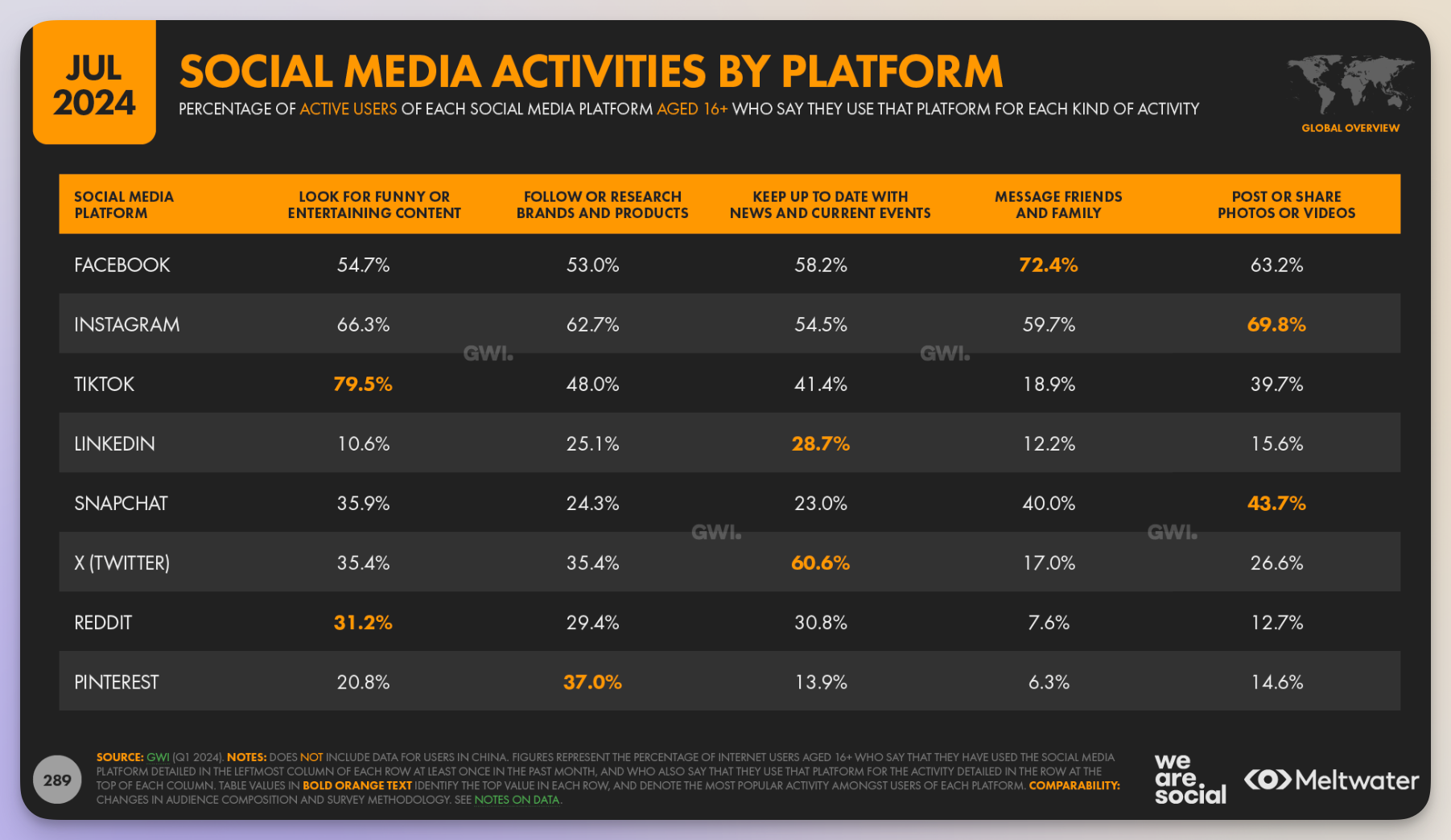
One key aspect of effective Facebook marketing lies in performance analysis, helping brands gain actionable insights and fine-tune their strategies.
A well-crafted Facebook strategy aims to increase brand awareness, drive traffic, generate leads, and boost sales, all while adapting to the evolving digital landscape.
In the end, it's about leveraging Facebook’s unique strengths to achieve business-specific objectives in a competitive social media environment.
Benefits of Facebook marketing
Using Facebook as a marketing tool involves a lot of strategic planning, which, despite the sweat and tears, usually results in tremendous gains.
Even with TikTok being so popular nowadays, Facebook remains the social media platform with the highest number of users. Therefore, with the network offering a great reach potential, the benefits of leveraging Facebook marketing are plenty.
-
Improves brand’s visibility
By building a presence on Facebook for your company, you get to widen your horizon while more users will have the chance to find out about your business’ products and services.
Enlarging your audience means that you can also extend your sales. Once you get in front of your target audience, if your posts are engaging enough, they will become curious to learn more about your brand and products or services.
-
Facilitates connections with target audiences
Being the social media platform with the highest number of users, Facebook offers great exposure potential in the case of multiple demographics.
According to data, the largest segment of Facebook’s users consists of the 25-34 age group, which also represents the second most active buyers category.
The numbers speak for themselves when it comes to proving why using Facebook for marketing is a great idea. Now all that’s left to do is to come up with the right creative concepts for your Facebook marketing campaigns. Look into what your target audiences are interested in and get the ball rolling.
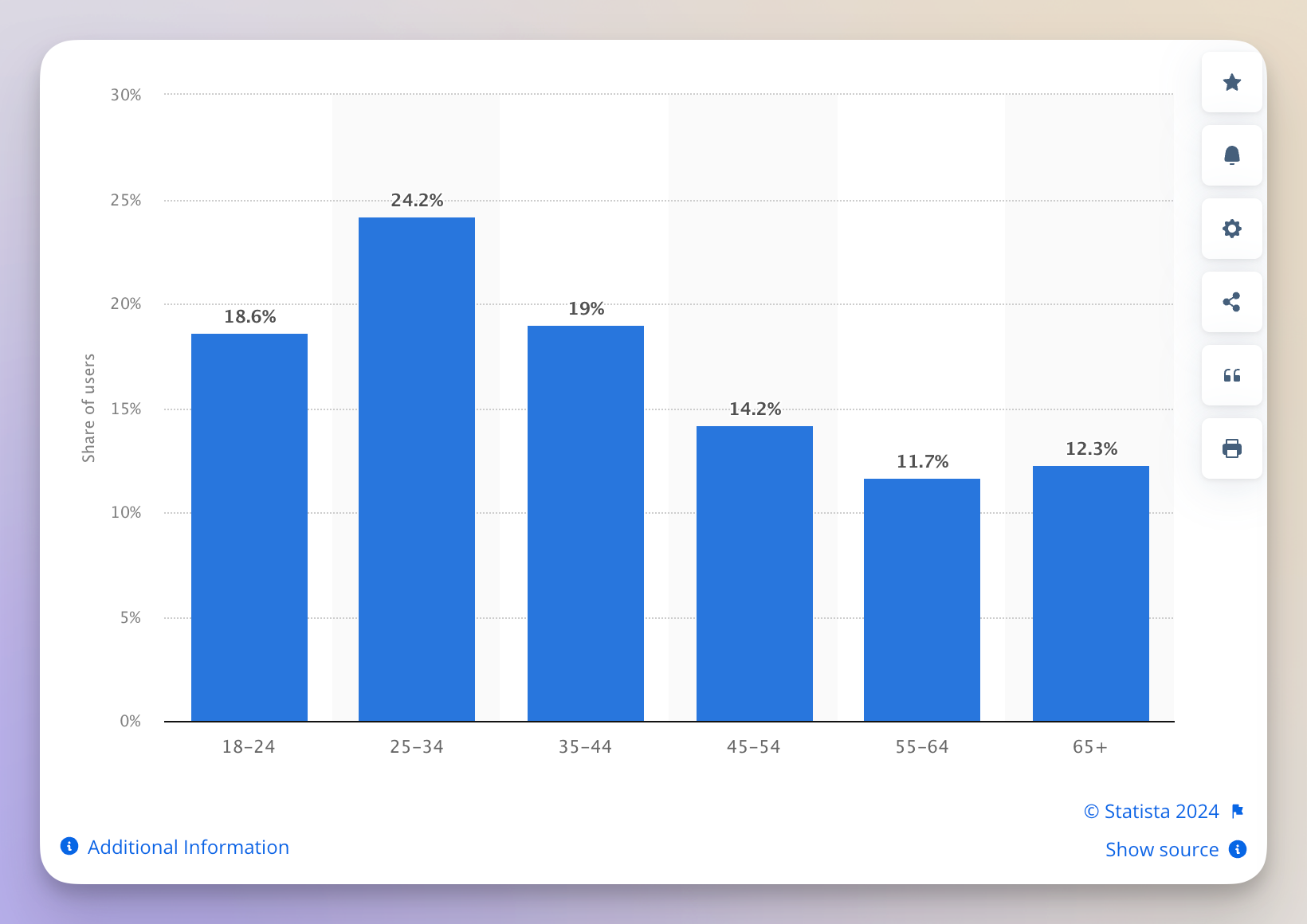
-
Direct sales that are easy to initiate
With Facebook allowing the creation of online stores directly within the platform, users’ buying journeys are shortened and streamlined, which leads to a win-win customer-brand relationship. While the consumers spend less time on the purchase process, brands increase their sales and revenue.
How to use Facebook for marketing?
Set up a Facebook page
To get started with Facebook marketing, you first have to create your business’ Facebook Page. To do that, you initially have to own a personal profile.
The first thing you need to do when creating a Facebook Business Page will be to log in to Facebook and choose “Pages” from your left-sided menu, then click on the “Create New Page” button displayed.
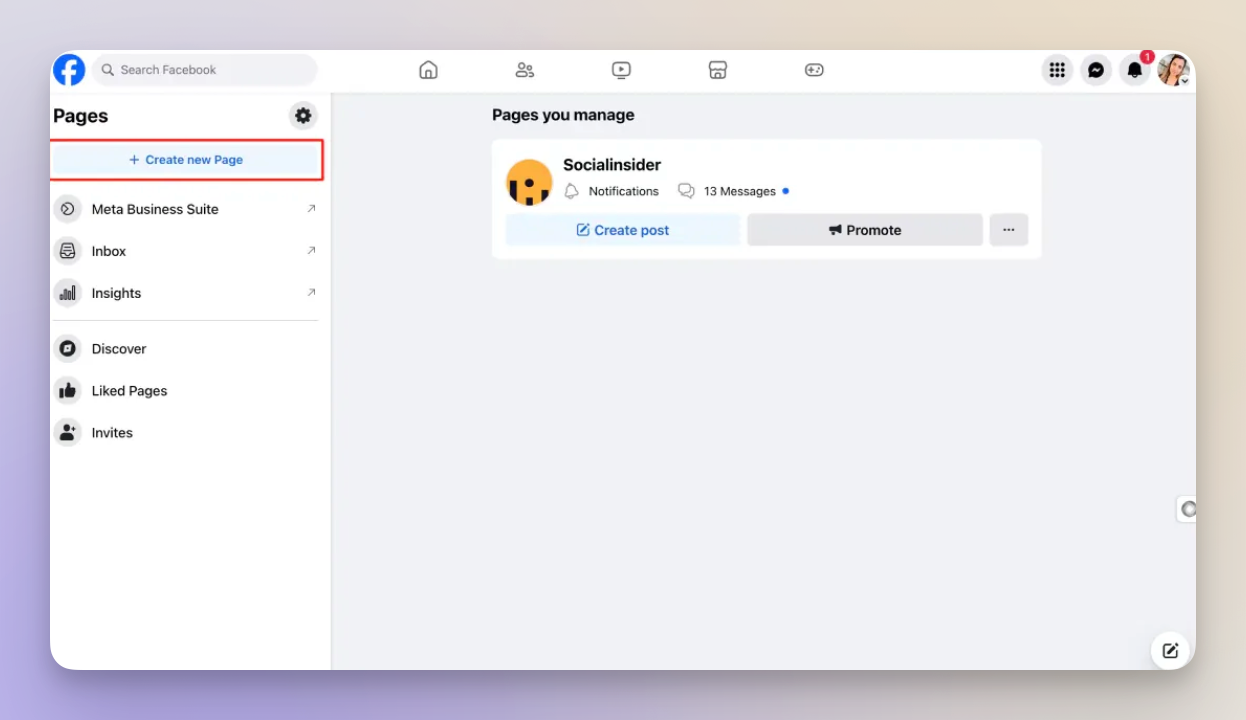
Then you’ll have to:
- Select your page name and business category
- Fill in your contact information
- Add design elements that include your profile and cover image.
- Additionally, you can even integrate CTAs, such as ”Call Now”, “Shop” or “Message”
TIP: don’t forget to verify your page (which means getting that blue check mark) that will appear near your page’s name. A verified page enables an increased level of trust within your business, which is extremely important for purchase initiation in today’s social media world.
Secondly, you might think about experimenting with some ads to expand your brand’s visibility and get closer to your target audience. For that to be possible, you need first to set up a Facebook ad account.
TIP: With Facebook being the social media platform with the highest ROI among all the paid marketing channels available, you should consider leveraging this promotion type when creating your Facebook marketing strategy.
Leverage multiple Facebook marketing features
Facebook comes with some native marketing features that are built to maximize brand visibility and engagement.
Facebook Messenger Bots
These bots facilitate connections with your audience by automatically responding to inquiries, showing that their needs matter and that you value their time. This instant communication tool enhances the customer experience, allowing for quick resolutions and boosting satisfaction.
Facebook E-commerce Manager
The E-commerce Manager allows businesses to integrate their product catalogs directly on Facebook, making it easier for users to browse, purchase, and engage with products without leaving the platform. This seamless shopping experience increases conversion potential and enhances the overall customer journey.
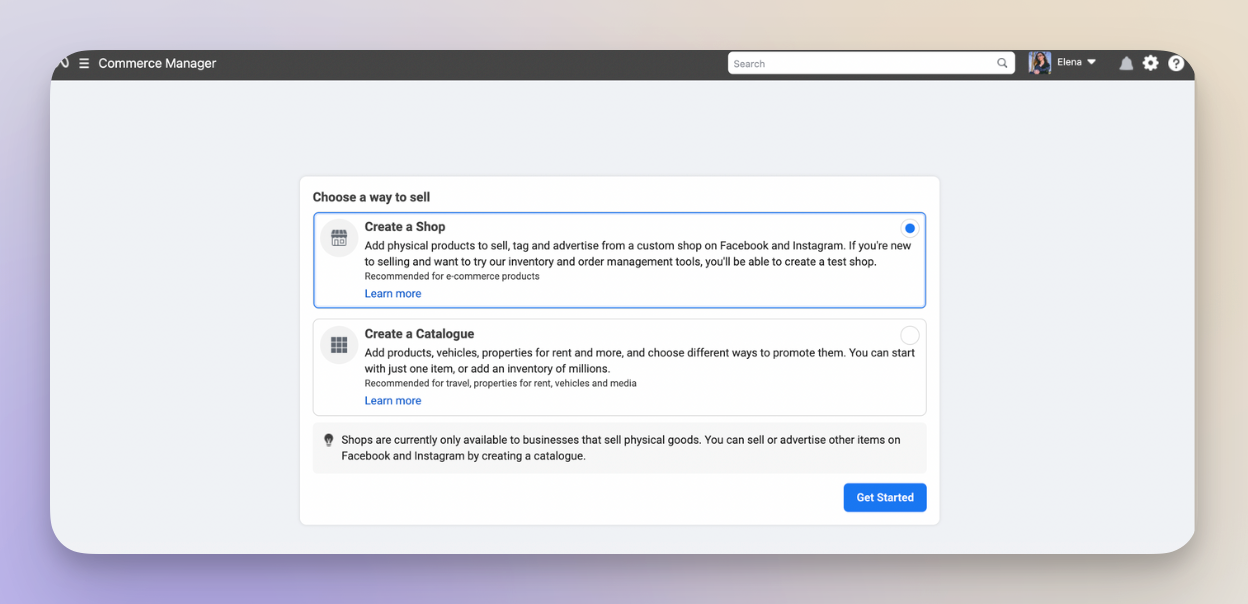
First, you'll need to determine which is the promotion type that best suits your business. Secondly, you'll need to learn how to efficiently upload your product's info, which should be creative, detailed, and descriptive in order to attract your customers to add them to their cart.
Lastly, you should select what category best describes what your brand sells. Make sure you complete everything as accurately as possible.
And there you have it. Through just a couple of steps, you've simplified your customers' buying journey. By leveraging this Facebook feature, your audience won’t need to click on your website and add to the cart there. They will be able to directly purchase from Facebook what their heart desires through the platform's e-commerce integrated feature.
Facebook Groups
Groups enable brands to foster communities where consumers can connect with each other and share experiences. By providing value within these groups, businesses can encourage consumers to become brand advocates, which strengthens trust and builds long-term brand loyalty.
Facebook Ads
With Facebook Ads, brands can reach highly targeted audiences based on demographics, interests, and behaviors. This ability to precisely target segments increases the potential for conversions and delivers a strong social media ROI, making ads a crucial element in your Facebook marketing plan.
How to create a Facebook marketing strategy?
After creating your Facebook business page, your next step would be to start planning your marketing strategies for Facebook. Or, if you've landed a new client with an already existing Facebook page, the next step you'll have to cover will be to run an audit.
At first glance, Facebook marketing might seem simple, but true success demands consistency and strategic thinking.
Run an audit of your current social accounts
Begin by evaluating the current status of your Facebook accounts. Running a social media audit will help you understand how your brand is performing and identify areas for improvement.
Look at key performance indicators (KPIs) such as the number of followers, engagement rate, and posting frequency. This will give you a baseline to measure future success and provide insights into what type of content resonates with your audience.
Set your Facebook marketing goals
For this part, you should start by asking yourself what you are trying to achieve by leveraging Facebook marketing.
Needless to say that any business’ end goal is to increase sales, but in the case of specific channels, such as Facebook, brands could establish goals that extend through the whole marketing funnel, from getting more brand awareness to loyalizing customers to generating direct sales.
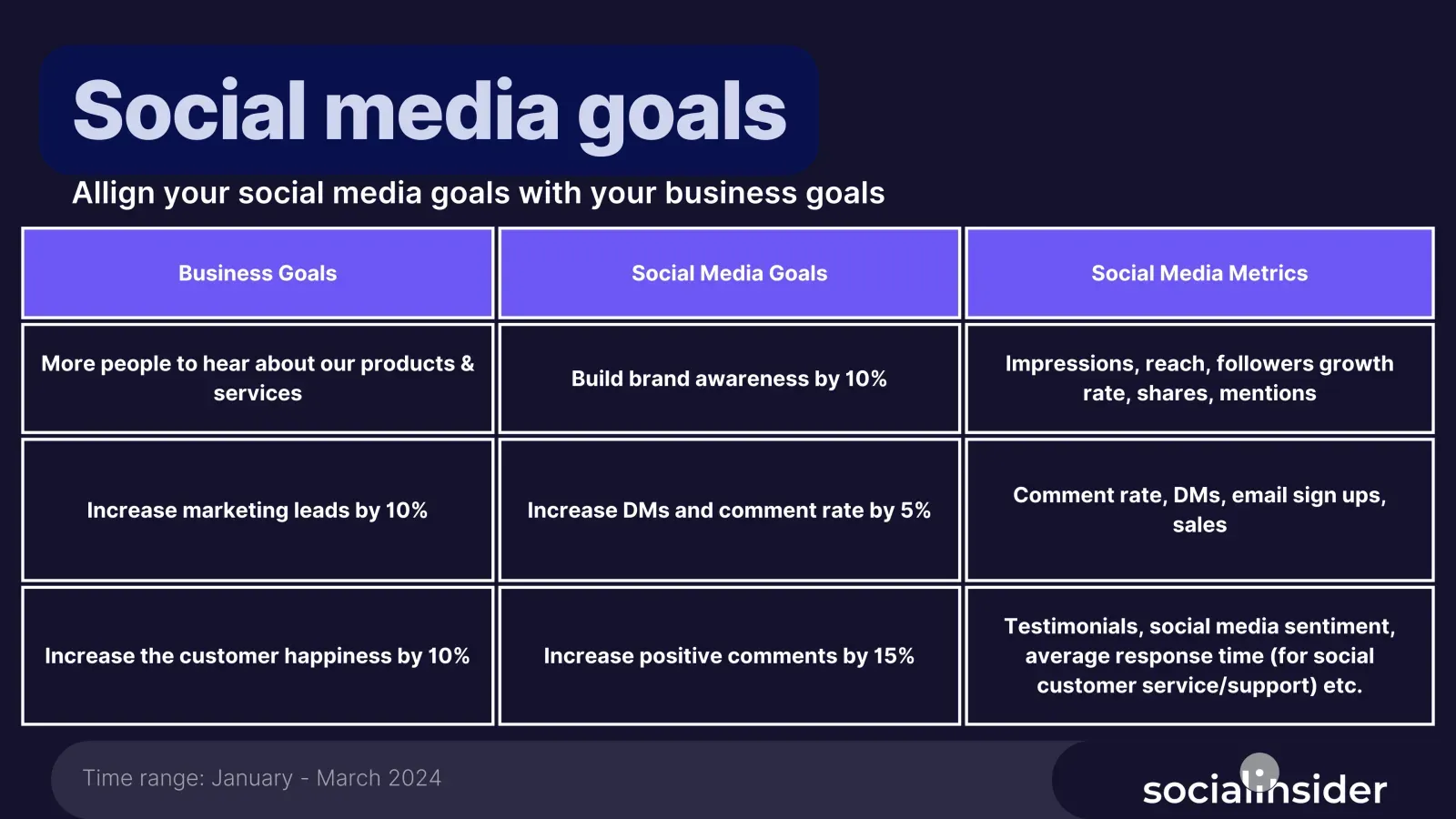
Understand your audience
Facebook has a distinct core audience, but it’s important to identify which specific segments align with your brand’s target group.
Start by creating social media personas—fictional profiles representing your ideal customers—based on socio-demographic criteria. Understanding their needs and pain points will help you tailor your content to be more relevant and engaging.
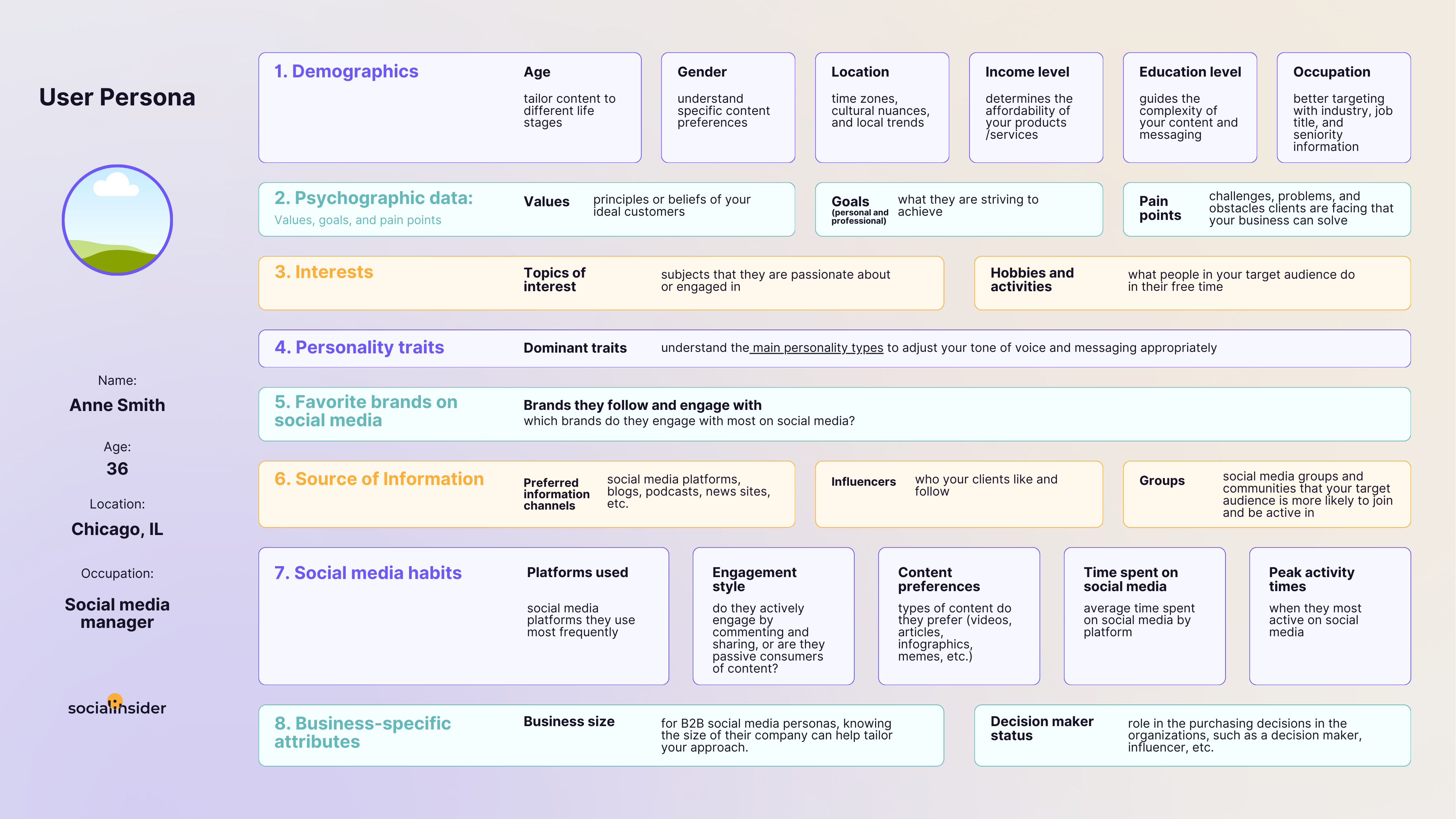
Crafting posts that resonate with your audience is the first step toward achieving the goals you’ve set for your Facebook marketing.
Regularly monitor Facebook audience analytics using Facebook analytics tools to ensure your content is reaching the target audience. If it's not, adjust your strategy to improve results.
Spy on competitor’s strategies
Monitoring your competitors’ Facebook strategies can provide valuable insights into tactics you might be missing and help you uncover opportunities for gaining a competitive edge.
Facebook analytics tools like Socialinsider make this process easier by allowing you to track your competitors' performance, compare engagement metrics, and analyze the effectiveness of their content.
For example, by using Socialinsider to analyze the number of posts Mercedes-Benz shares and correlating it with their engagement and reach, you can see how their more active Facebook presence generates better results compared to BMW, which posts less frequently. This type of insight helps you refine your strategy and make data-driven decisions that improve your overall performance.
Create a content plan
When creating your Facebook content strategy, it’s essential to define several themes that your posts will cover. These content pillars—such as product promotion, behind-the-scenes moments, or posts highlighting your company’s values—will bring diversity to your content mix and keep your audience engaged over the long term.
Start by identifying what type of information is relevant to your audience and aligns with your brand’s positioning and mission. Then, determine which post formats will best showcase each content topic.
For instance, product promotions might work well with images or videos, while company culture can be highlighted through behind-the-scenes posts or Stories.
If you’re seeking inspiration, a great approach is to conduct a social media competitor analysis to see which content topics your competitors are leveraging and adopt the ones that suit your brand.
Also incorporating the latest social media trends into your strategy is another smart move that can boost your brand’s visibility and engagement.
Once your content pillars are in place, the next step is to establish a posting frequency and timeline. This ensures that your posts are consistent and timely, which is key to maintaining social media engagement.
Types of Facebook posts
To keep your content diverse and engaging, it’s important to use a variety of post formats. Here are several different post types you can incorporate into your strategy:
- Text-based posts are simple but effective, allowing you to share announcements, pose questions, or spark discussions with your audience. These posts are especially useful for engagement, as they encourage users to interact directly without leaving the platform.
- Static images are ideal for showcasing your brand visually. These posts might include product photos, customer-generated content (UGC), behind-the-scenes snapshots, or anything else that visually represents your business.
- Videos are versatile and can vary in length, making them perfect for a range of content, from product demos and tutorials to interviews and seasonal campaigns. Facebook videos are generally horizontal and longer, which makes them ideal for storytelling and in-depth content.
- Stories are short, temporary content that disappears after 24 hours and can include either photos or videos. These are great for quick updates, event announcements, or giving a real-time look behind the scenes. Stories also bypass Facebook’s algorithm, making them a more direct way to stay top-of-mind with your followers.
- Reels are short, engaging, vertical videos similar to TikTok content, designed to grab attention quickly. They are typically more playful and creative, using music, dynamic captions, and eye-catching visuals. Reels are great for showcasing entertaining content that drives high engagement.
Using a mix of these post types—text, images, videos, Stories, and Reels—you’ll be able to create a diverse content strategy that keeps your audience engaged.
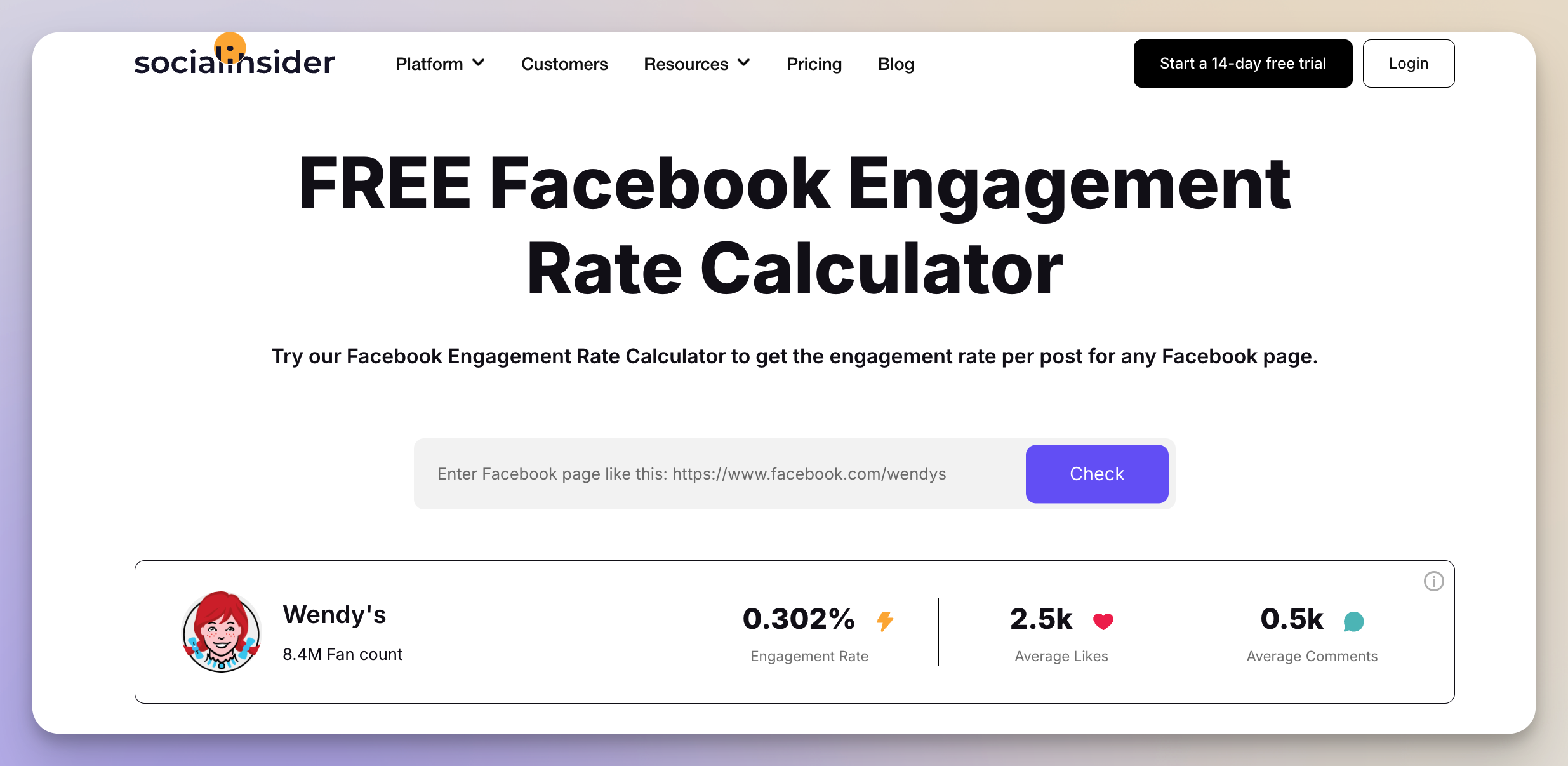
Optimize your posting calendar
Once you’ve planned your content, it’s crucial to optimize your posting schedule to maximize social media reach and engagement, especially when implementing your Facebook ad campaign strategy.
The best time to post on Facebook varies based on the behavior and preferences of your target audience, which is key for effective Facebook social media management.
Analyzing audience activity patterns through Facebook analytics tools helps you identify optimal posting times, ensuring your content reaches the right people.
Also, consistency in posting at the right times boosts visibility and interactions, which are essential for successful Facebook marketing campaigns. Regularly reviewing and adjusting your posting calendar - as audience behavior and platform algorithms evolve - will improve your results.
Additionally, testing different posting times and monitoring performance are critical elements of refining your Facebook ad strategies to achieve the best outcomes.
Make data-driven improvement decisions
Tracking key performance indicators (KPIs) helps you to identify the best and least-performing content patterns and trends. Analyzing these social media metrics will enable you to make informed decisions on what type of content resonates most with your audience and use these insights to guide future efforts.
For example, Popeyes has found that content related to special offers and promotions tends to generate high engagement. As a result, the brand incorporates this pillar heavily into its posting strategy to maximize interaction and keep followers engaged.
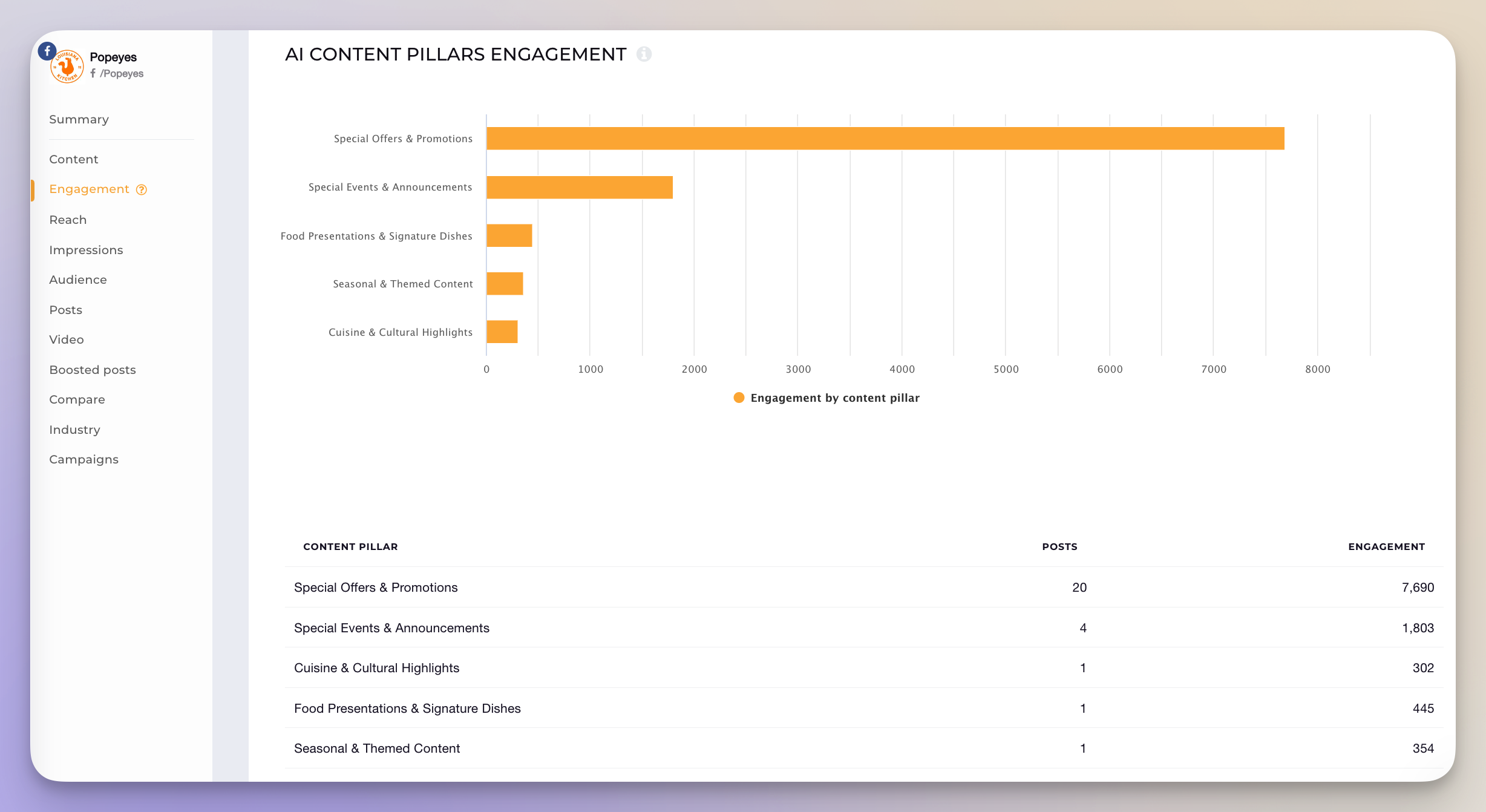
By consistently reviewing performance data, you can refine your approach and focus on what drives the most value for your brand.
Experiment with ads
A successful Facebook marketing technique seamlessly integrates both organic and paid efforts to maximize reach and impact.
Organic efforts are focused on the long-term, as they build trust, credibility, and brand loyalty over time. While organic reach may fluctuate and take time to develop, its effect on brand reputation and customer relationships is invaluable. These efforts help establish an authentic connection with your audience, fostering engagement and loyalty that lasts.
On the other hand, paid social media is a performance-driven approach that prioritizes immediate results. It allows brands to quickly reach a wider audience, drive conversions, and achieve specific social media goals such as increasing sales or generating leads.
Facebook advertising strategies offer a targeted solution, ensuring that your content reaches the right people at the right time.
By combining both strategies, brands can leverage the best of both worlds. Investing in paid ads helps amplify your message, while organic content maintains the trust and connection you’ve built with your audience.
Paid ads also give you full control over who sees your content, allowing you to exclude irrelevant audiences and focus on high-potential customers, ensuring that your marketing efforts are both effective and efficient.
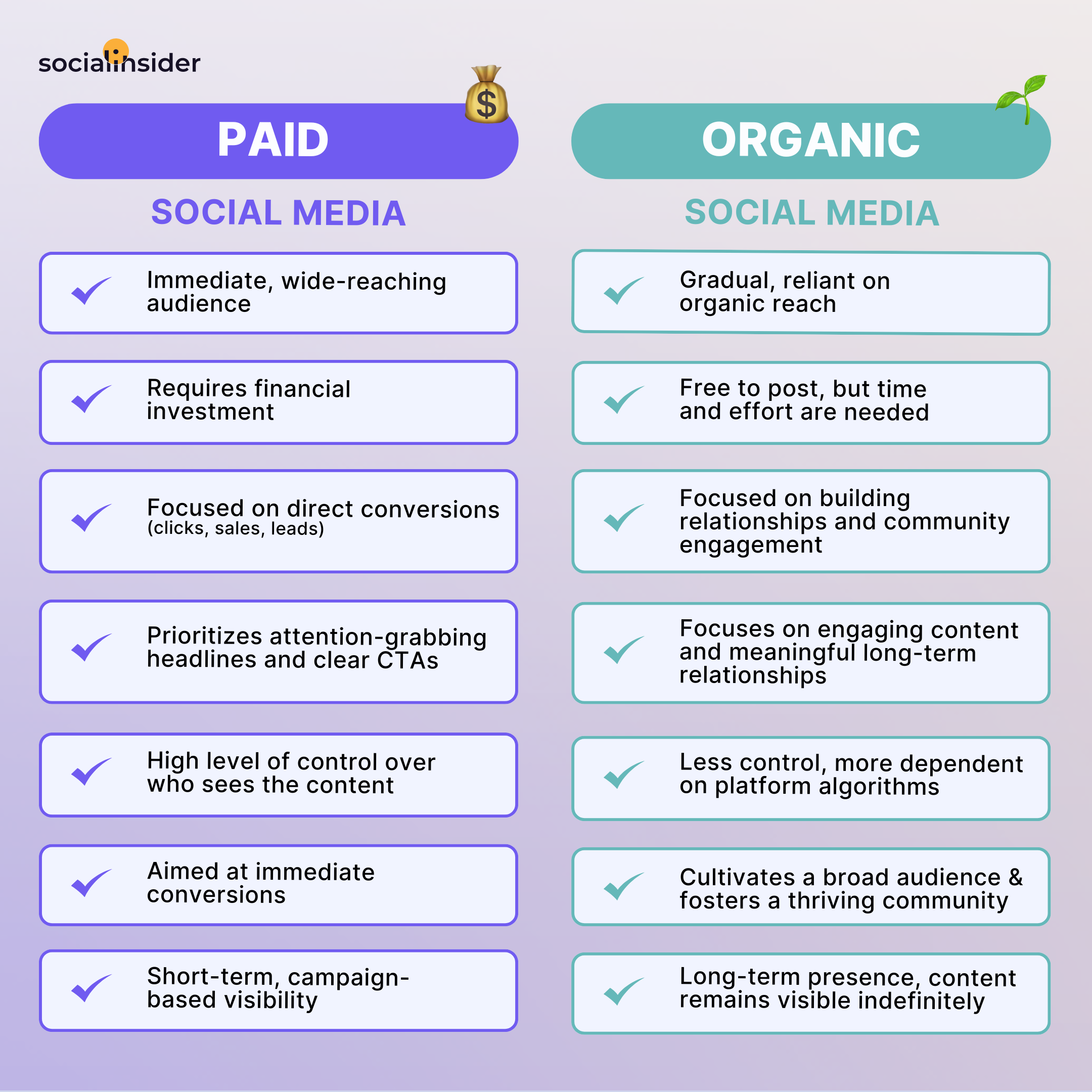
How and when to leverage Facebook ads?
When talking about how to use Facebook as a marketing tool, you need to understand there are two main directions, each with its specific set of strategies, and those are organic Facebook marketing and paid Facebook marketing.
For optimized results, it’s recommended to mix these Facebook marketing tactics.
While organic Facebook marketing represents the foundation for building your presence within the app, portraying consistency in addressing your community’s needs, which, in the long run, is crucial for brand perception, paid Facebook marketing provides you with extended reach. And by putting you in front of more people that belong to your target audience, paid Facebook advertising can help you boost sales more rapidly.
However, when deciding to leverage paid Facebook marketing to increase your chances of getting the results you’re looking for, you should make sure you checked off the following milestones of your list:
- You have a complete Facebook Business Page
- You gained at least 1000 followers
- You’ve been posting consistently for a while (try to have at least 20 posts)
- You have created multiple creative assets for each ad you’re planning on running
- You thought about an A/B testing strategy.
Another important aspect you have to keep in mind when creating your paid Facebook marketing strategy is that the platform enables multiple options for paid advertising, and you should carefully choose the formats that benefit you the most.
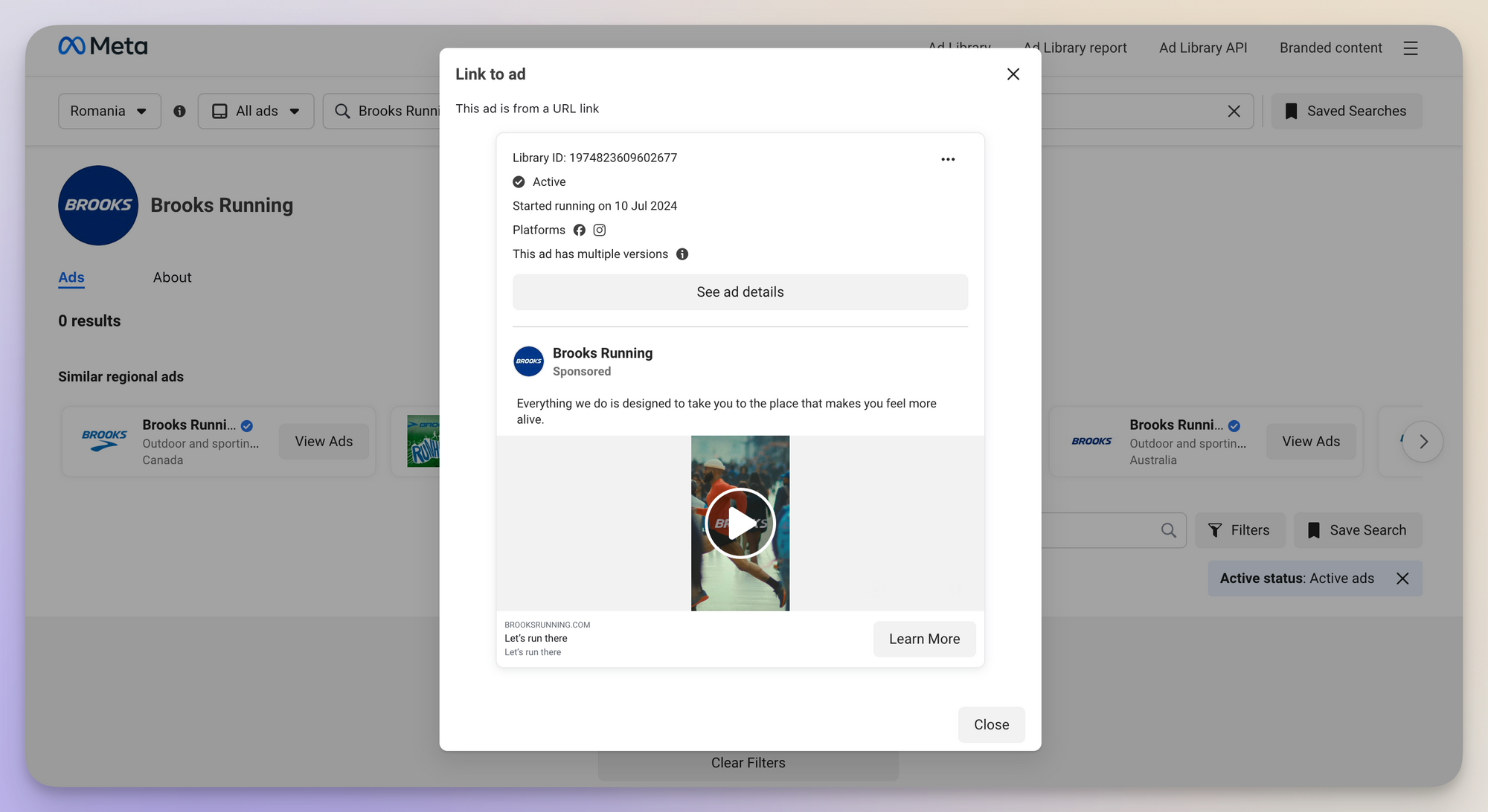
The basic level of paid Facebook ads is the boosted post option, which consists of investing some money in an already published post to (guess what) boost its performance.
The more advanced Facebook paid advertising feature consists of ad campaigns, which implies creating a particular set of ads for a specific campaign, such as a product launch, and it requires more handling and supervision.
For budget optimization, it is recommended to start your journey into the world of paid Facebook advertising with the simpler versions and gradually invest more into ad campaigns as you gain insights into how the platform’s algorithm works.
Depending on your business’ needs, you’ll have to focus your Facebook ads campaigns on the objectives you’re trying to achieve. For different goals, you’ll have to create different campaigns.
Now, based on your brand’s marketing plan, think about how Facebook ads can help you achieve the goals you’ve set. Facebook ads can be leveraged for multiple purposes, from awareness, engagement, and traffic to leads and sales.
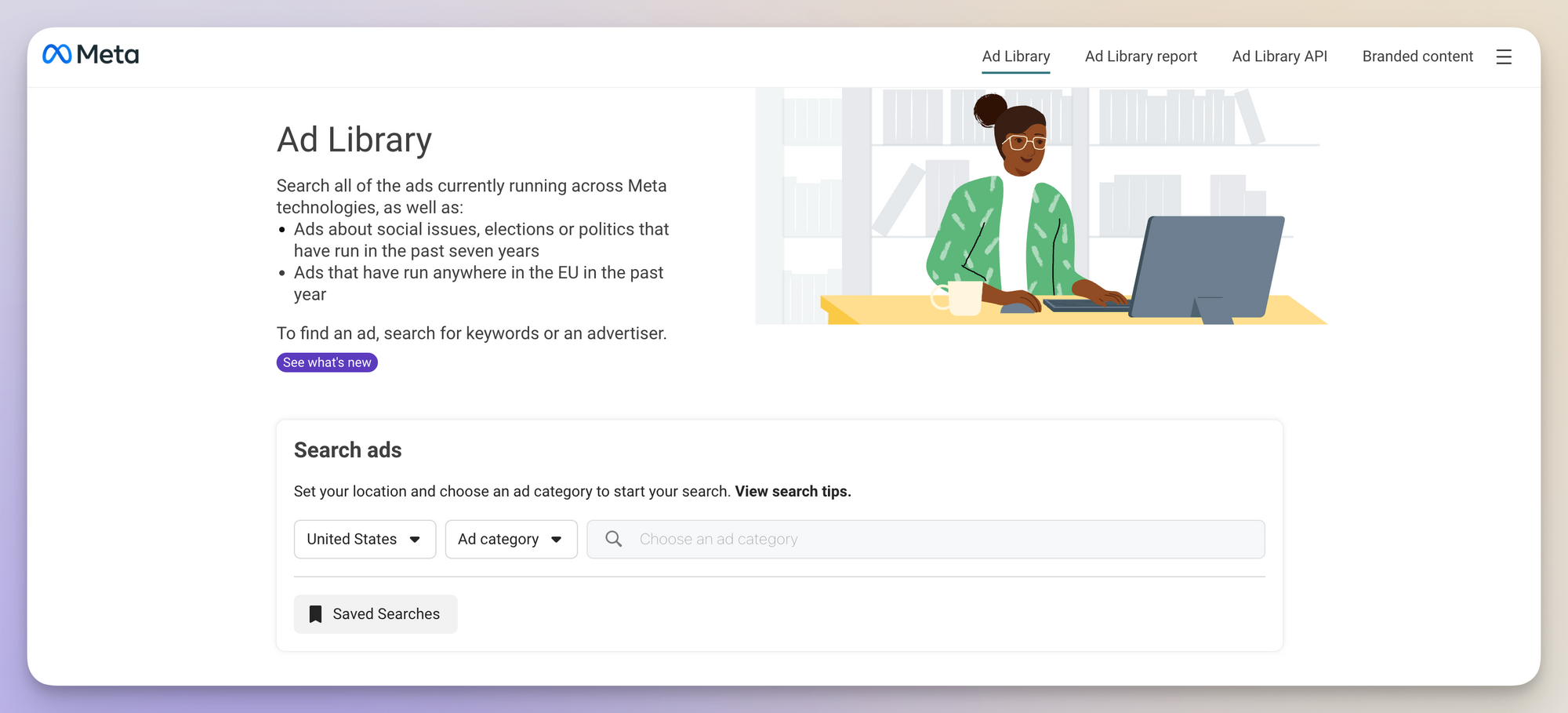
Facebook marketing costs
As mentioned earlier, digital marketing on Facebook can be divided into “free” and paid tactics.
While organic Facebook marketing efforts don’t imply any costs (except what you’re paying to your social media agency, if the case, obviously), in the case of paid Facebook, there are no restraints on the budget you can spend.
When you’re setting up your Facebook campaigns, you’re in total control of the money you put on the line, as there is no threshold on either the lower or the upper limits.
To give you a hand when creating your Facebook marketing budget for paid ads, we’ve gathered below the average Facebook ads costs nowadays:
- Facebook Ads CPM (Cost Per 1,000 views) – $14.9
- Facebook Ads CPC (Cost Per Click) – $0.44
Facebook marketing tips
Engage with your audience
Social media is a two-way communication street, and actively engaging with your followers is key. Today’s consumers often choose brands based on their values and the experiences they provide. Responding to comments, messages, and mentions shows that you care about your audience, building trust and loyalty.
Leverage Facebook Live Events
Facebook Live is a great way to build meaningful relationships with your audience. Hosting live events such as Q&As, product demos, or tutorials allows you to connect with followers in real-time, answer their questions, and provide solutions to their needs.
Ask questions
Asking questions in your posts is a great way to engage your social media community. This shows that you care about their interests and allows you to discover their pain points, which your brand can address. Engaging with followers through questions also boosts interaction and keeps your audience involved.
Use albums to showcase company culture and events
Albums are, at the moment, the best-performing content format on Facebook. Thanks to their storytelling nature, which allows viewers to get deeper into the company's journey with every picture presented, these post types are great for revealing more about your company - from office traditions and team gatherings to event presentations.
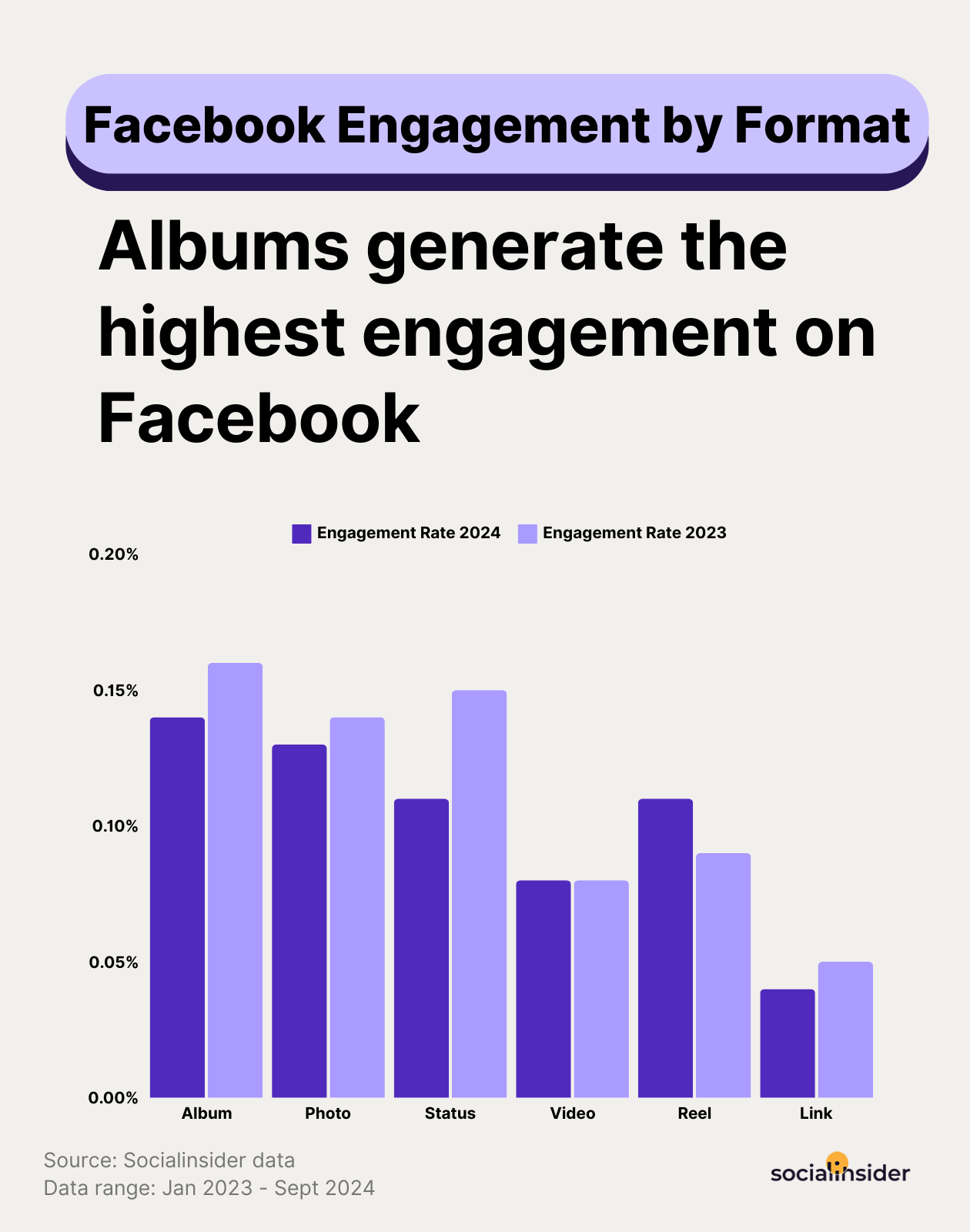
Facebook marketing examples
To give you a bit of help when it comes to choosing the Facebook marketing strategies you should leverage for successful results, we took a peek at how some of the world’s most beloved brands handle their Facebook presence.
Starbucks
When it comes to gaining some inspiration for your Facebook marketing plan, one of the most creative and fresh brands you can check out is Starbucks. First and foremost, the brand’s marketing strategy for Facebook is centered around its core mission - that of creating a feeling of belongingness, a community whose members share the same values.
What makes the brand’s Facebook marketing campaigns stand out is its authentic, human vibe, which is achieved through relatable messages and also user generated content.
Last but not least, another reason why Starbucks is a great example of Facebook marketing done right lies in its strategy of creating diversified content. From Reels to GIFS and albums to the more classical formats, such as status, or image post types, Starbucks’s Facebook page has a highly dynamic and entertaining nature.
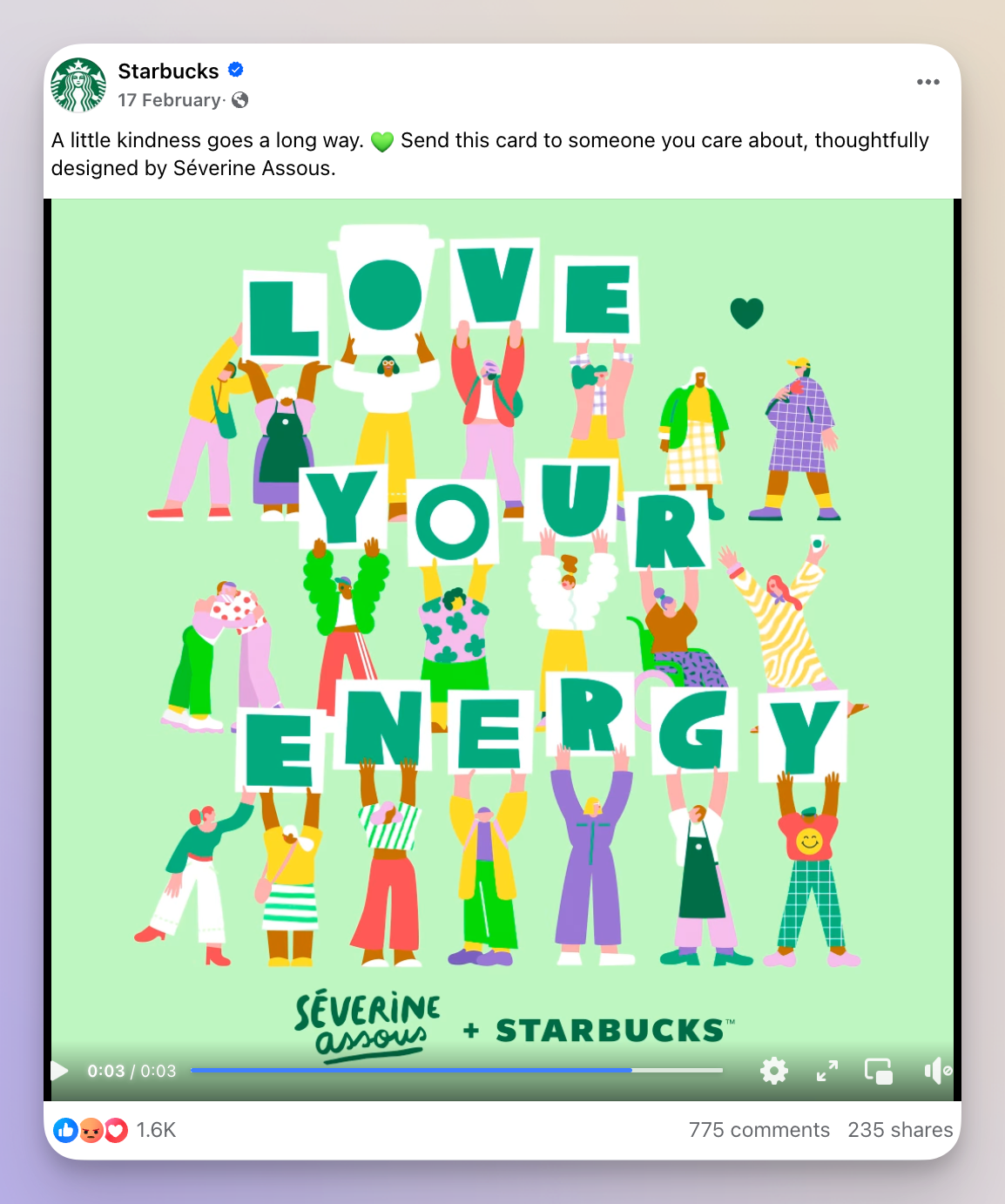
Booking.com
The brand’s Facebook success is based on its highly storytelling nature. By highlighting its holiday destination and accommodation options through vibrant creatives, altogether with suggestions of dream scenarios for travelers, Booking.com does an amazing job of charming and engaging its Facebook community.
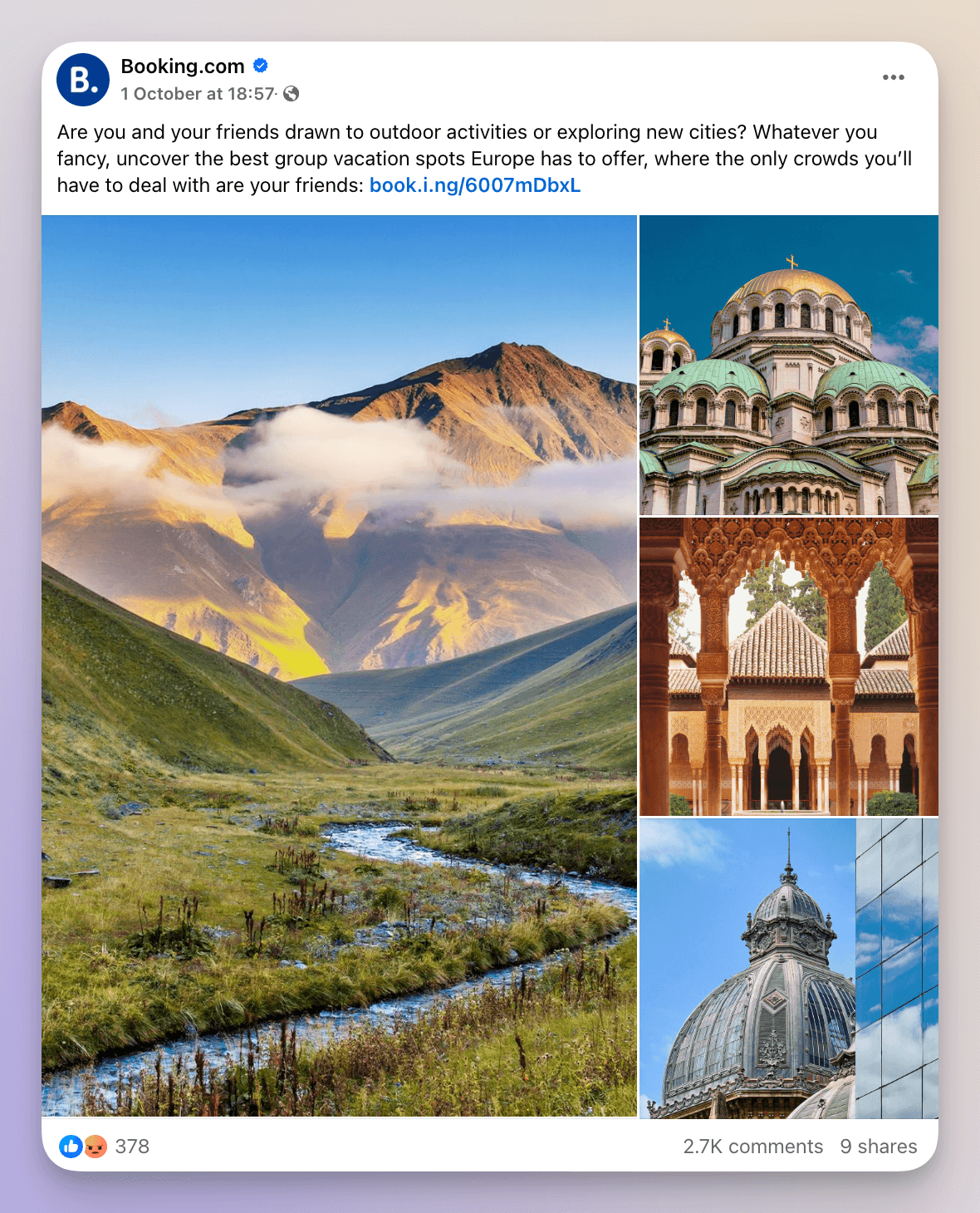
Effective tools for successful Facebook Marketing
To run a successful Facebook growth strategy, having the right tools in place is crucial. Here are three essential tools to elevate your Facebook marketing efforts.
Canva: for design
Creating visually appealing content is crucial for Facebook growth and capturing your audience's attention.
Canva, a user-friendly design tool, helps marketers create high-quality graphics, images, and videos without advanced design skills.
With templates designed specifically for social media, you can easily craft eye-catching visuals for posts, ads, and stories that align with your brand.
Incorporating tools like Canva into a good marketing strategy ensures your Facebook content stands out, engages your audience, and drives better results.
Grammarly: for content
Nobody likes social media content with typos and grammatical errors.
Grammarly helps ensure your posts are clear, engaging, and free of errors. It checks grammar, spelling, and tone, ensuring that your Facebook content is polished and professional.
Whether you're writing captions, blog posts, or longer-form content, Grammarly is essential for creating copy that resonates with your audience.
Socialinsider: for social media analytics
To achieve sustainable growth in social media marketing on Facebook you need to track your performance.
Without tracking performance, it’s impossible to understand what’s working and what needs improvement.
To measure the effectiveness of your Facebook marketing efforts, Socialinsider provides powerful social media analytics.
With Socialinsider, marketers can easily track key Facebook marketing KPIs to gain deeper insights into their content's performance. Some of the key metrics include:
- Engagement by followers and by reach: This metric helps you understand how well your content resonates with your audience, both in terms of followers engaging with your posts and the overall reach of each post. It provides a clearer picture of your content’s true impact.
- Best performing and least performing content formats: Socialinsider allows you to identify which content formats—such as videos, images, or text posts—are driving the most engagement and which are underperforming. This insight is crucial for refining your content strategy.
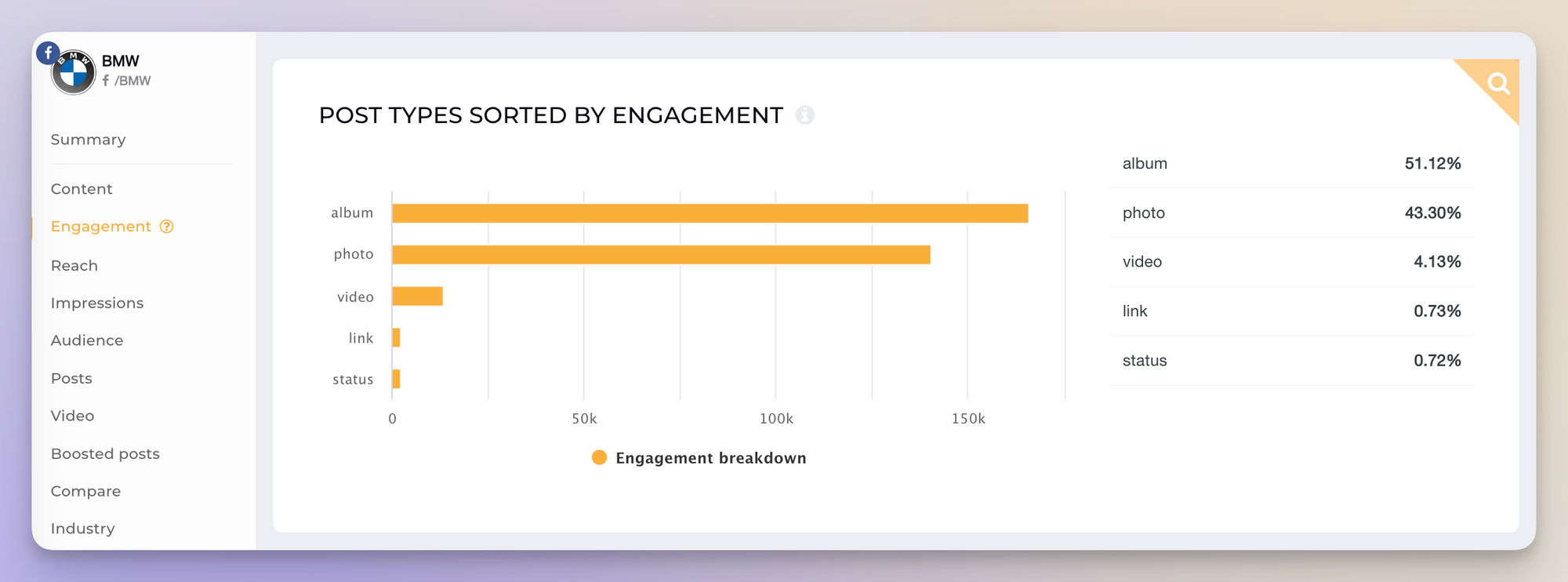
- Distribution of likes, comments, and shares: This metric breaks down audience interactions, helping you identify the types of content that spark specific behavioral patterns. Whether it’s posts that drive likes, conversations, or shares, these insights can guide your strategy to create content that fosters engagement.
- Top and Bottom Posts: By highlighting your top-performing posts as well as those that fall short, you can learn which types of content resonate most with your audience and where improvements are needed.
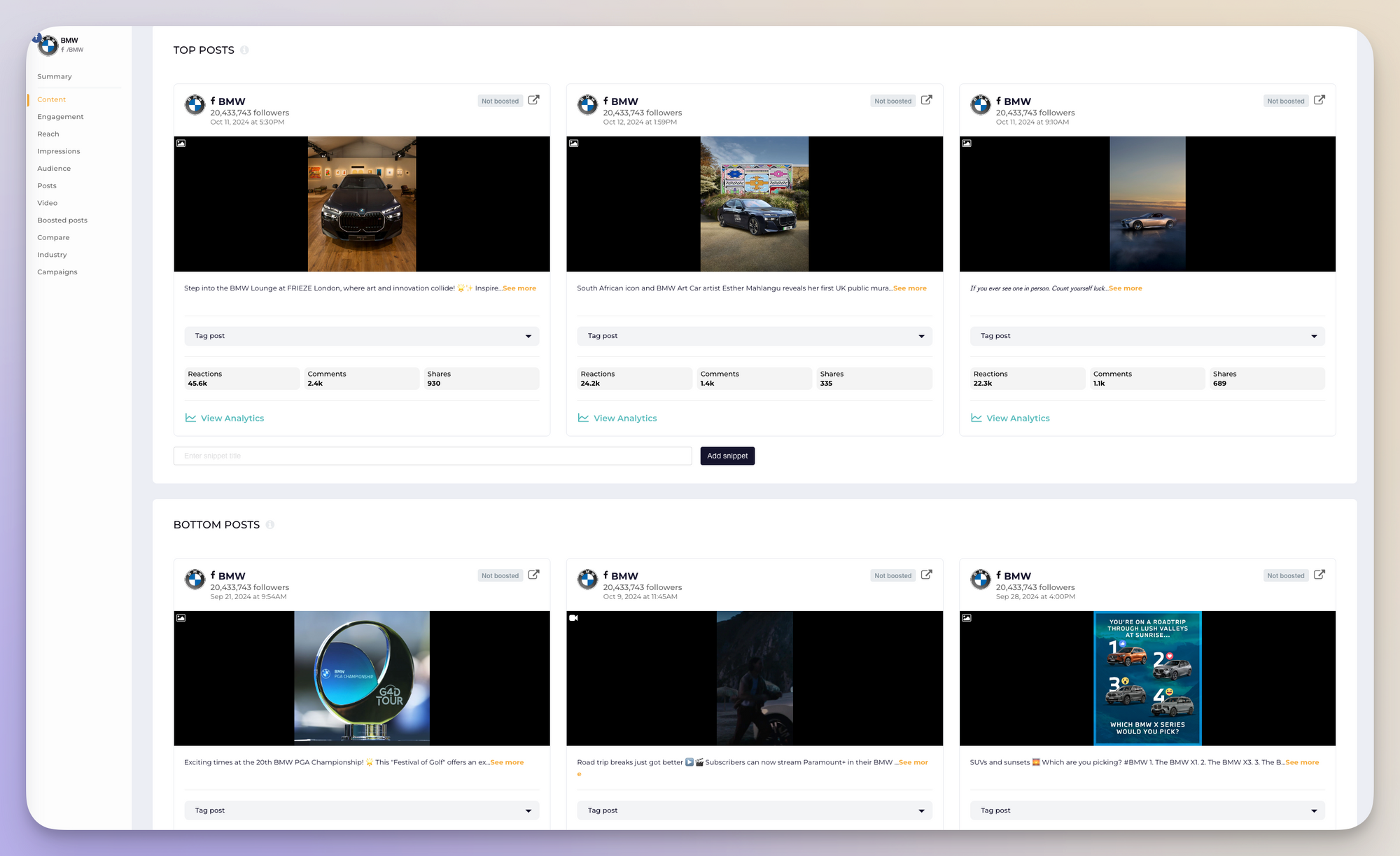
Final thoughts
Marketing your company on Facebook requires a strong content strategy for Facebook that integrates both organic and paid efforts.
By leveraging tools like Socialinsider, social media managers can track key metrics, refine your approach, and optimize results.
Social media marketing for Facebook is crucial for engaging audiences, driving sales, and building brand loyalty.
With Facebook’s wide reach and advanced targeting, brands can maximize visibility and conversions, making Facebook in marketing a powerful tool for growth.
FAQs on Facebook marketing
How important is it to leverage Facebook video marketing?
Video marketing makes for an important element of a Facebook strategy, as most social media users nowadays appreciate the most this information-delivery method. In the form of Reels, or regular, in-feed posts, video content is one of the top-performing post types.
What does marketing in Facebook Groups mean?
Facebook Groups marketing refers to promoting your business in Facebook's private spaces, where the communities gathered around a certain topic are named groups. This can be done by creating special promotions for the members of a Facebook Group or simply providing the members of a group with information about how your brand's products or services can represent a solution (where the case) to various needs they may have.








